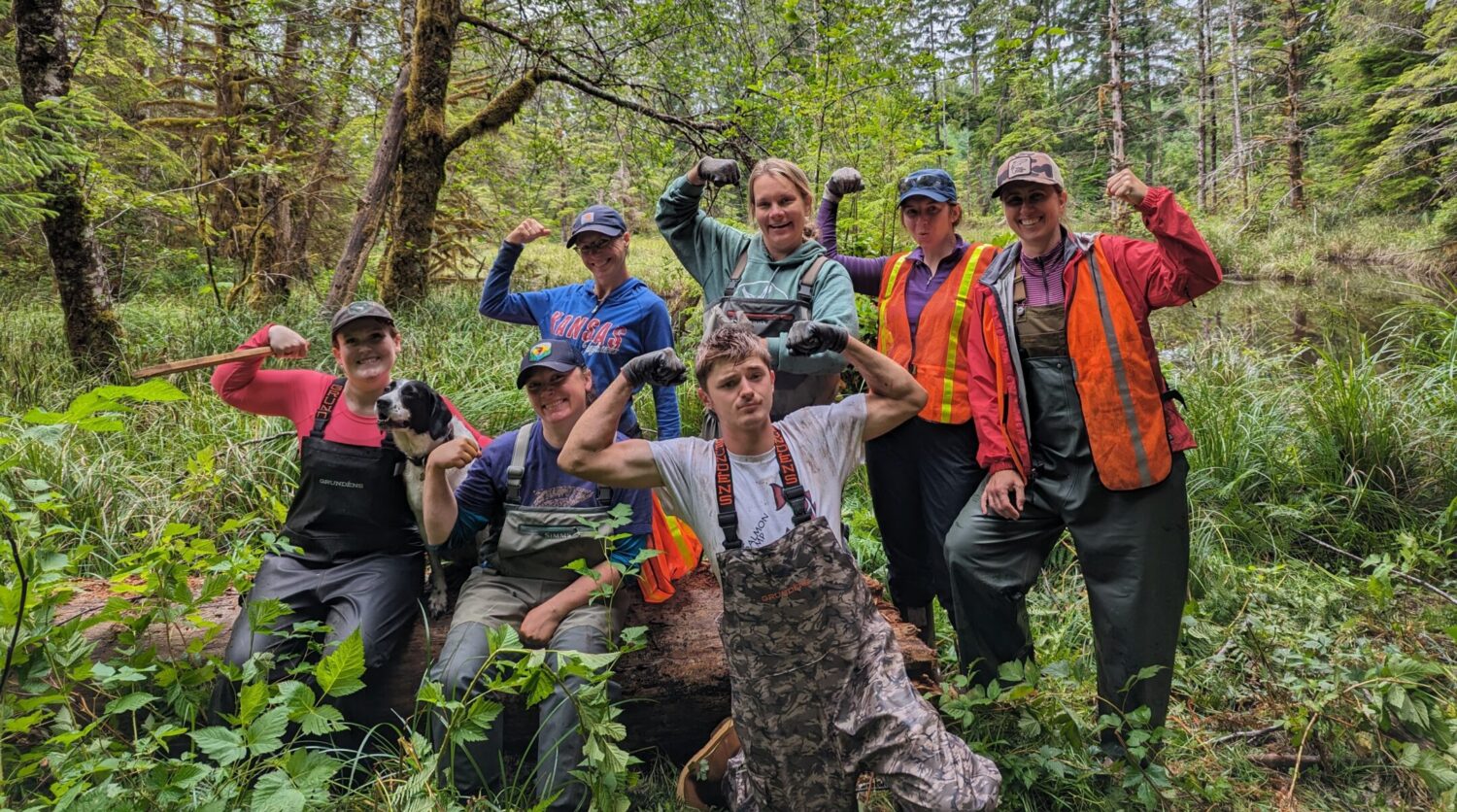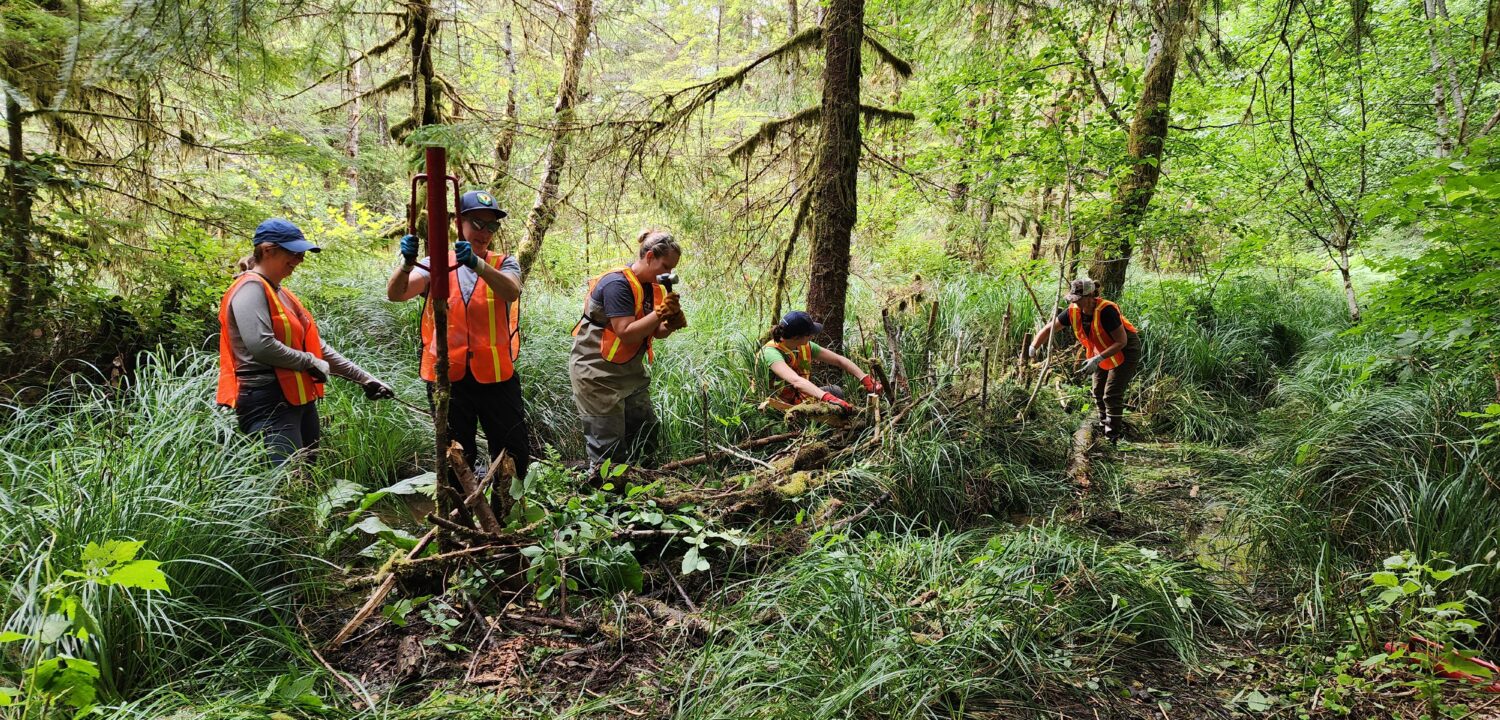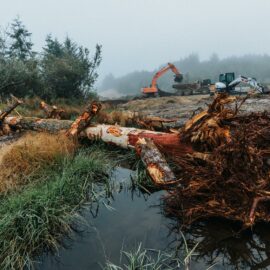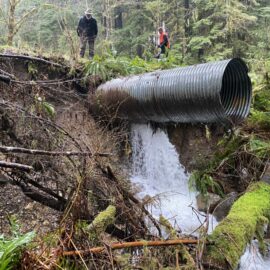Restoration work doesn’t have to be high-tech. Sometimes the most effective solutions just need elbow grease…and an Arnold.
On Washington’s slow flowing, ferny Dickey River, the water was unusually low, even for mid-August. Normally, that would bother Betsy Krier and Nicole Rasmussen, Wild Salmon Center’s two Forks-based Fish Habitat Specialists. They worry about juvenile coho stranded in the river’s feeder creeks, and the threat of overfishing in the mainstem, where adult salmon pack more tightly into fewer cold pools.
But they saw at least one bright side. Low flows would make it easier to do the work of the next several weeks: tearing out fish barriers, while strategically “messying” up creeks with post-assisted log structures (PALS) and beaver dam analogs (BDAs).
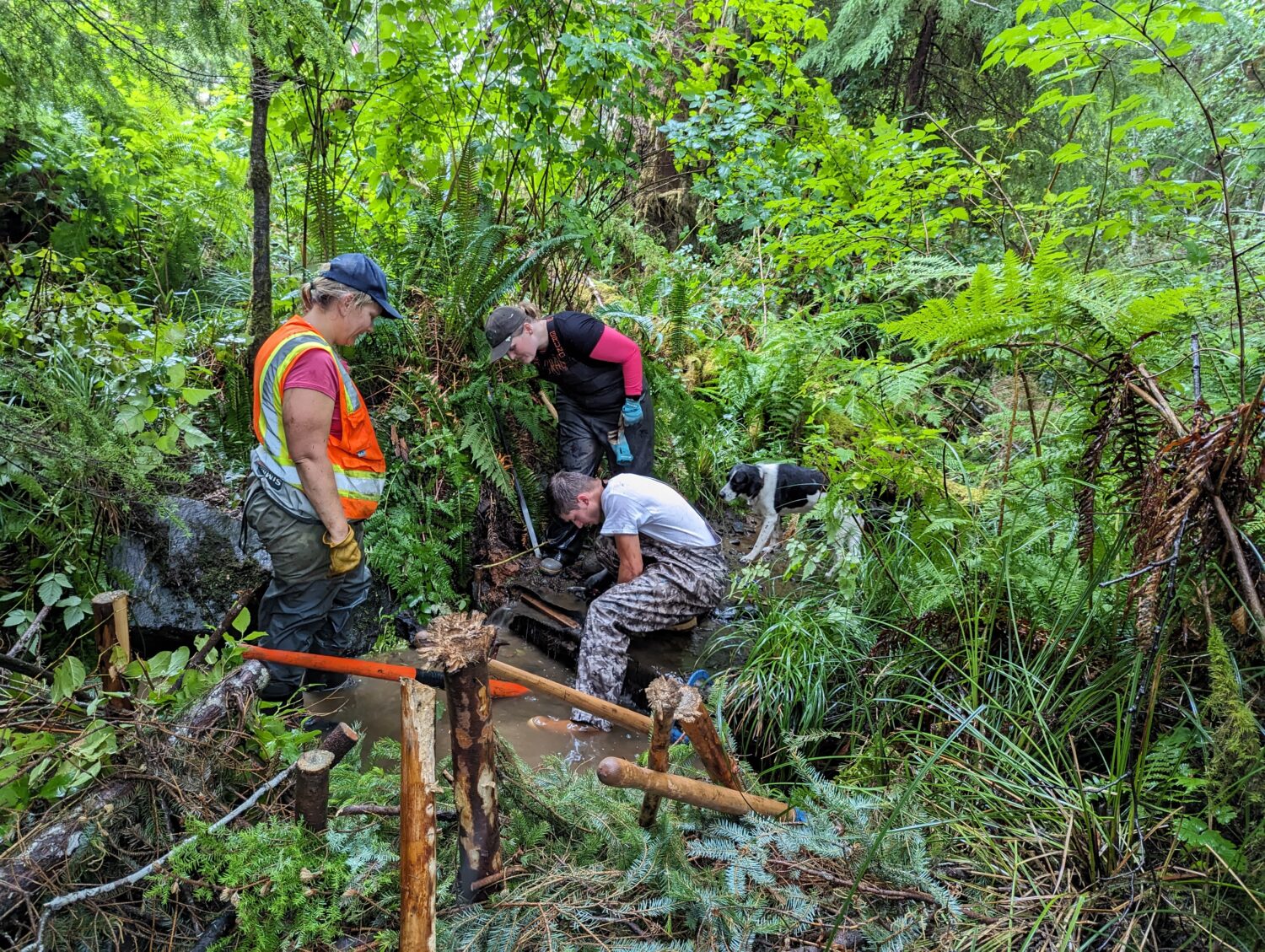
“Salmon need options,” Krier says. “Juvenile coho might hopscotch up a creek to find a colder pool, duck back into the mainstem to find food, or hide out inside a beaver dam. They’re incredibly resilient when humans don’t get in their way.”
Unfortunately, we do get in their way, even in remote river systems like the Dickey, a Quillayute River tributary. One example is a set of 30-year-old plank weirs that staircase up streams that feed the West Fork Dickey River.
Plank weirs were originally installed to “improve” on benefits long provided by beaver dams, like cold water pools and hopscotchability. But over time, these impermeable structures have proven more limiting than liberating. In winter high flows, the weirs become uniform gushers without choice routes for fish. And in low flow times like now, they can effectively become fish traps.
“In the past, some thought beaver dams were unreliable for fish, and that it’d be better to just bolt some big logs into the creek,” Krier says. “But it turns out that these streams function best when they’re allowed to be messy and complex.”
“Salmon need options. They’re incredibly resilient when humans don’t get in their way.”
WSC Fish Habitat Specialist Betsy Krier
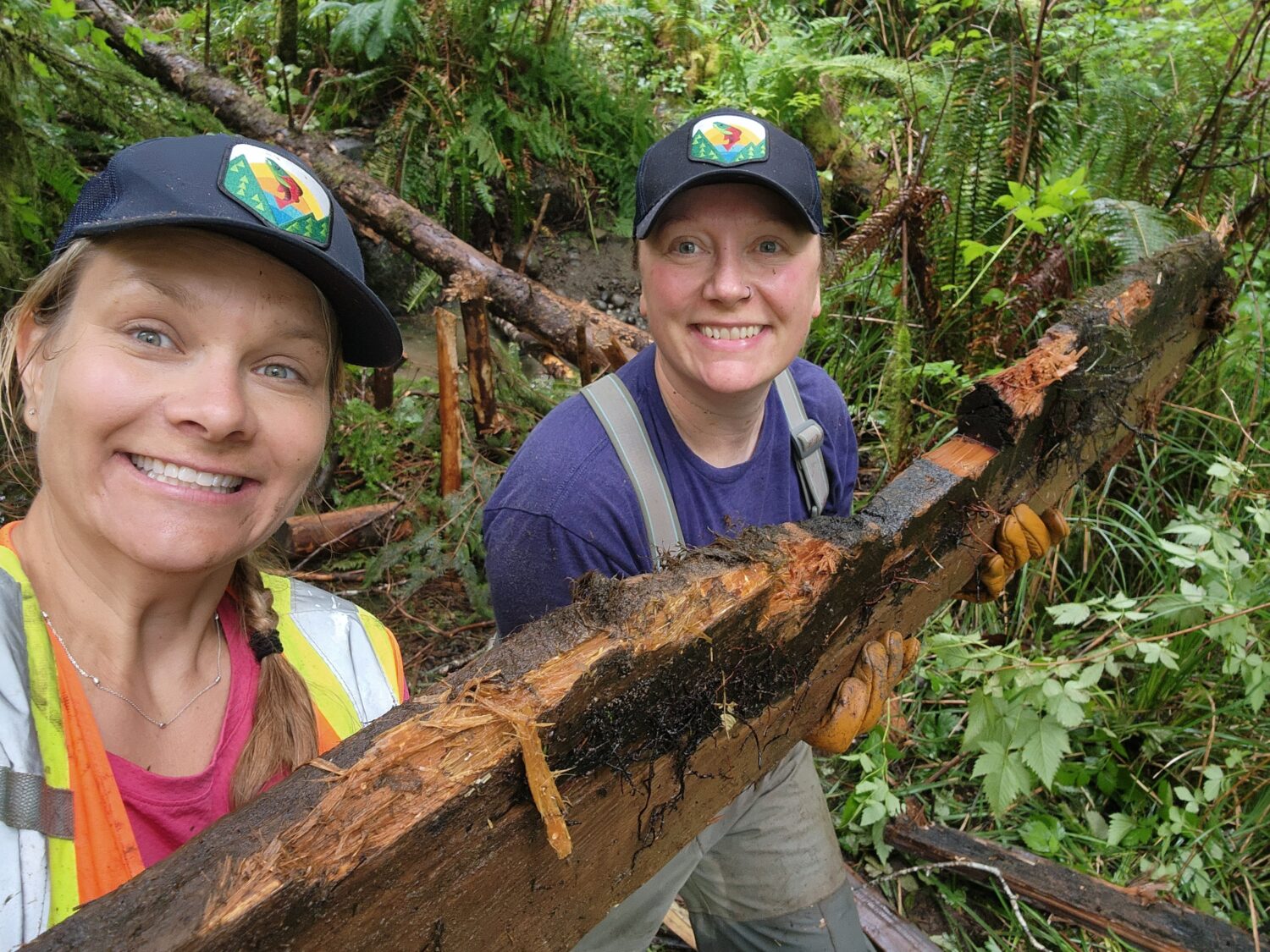
Messing up the West Fork Dickey tributaries is exactly what Krier and Rasmussen set out to do this August, along with a crew of volunteers from Wild Salmon Center and staff from the Pacific Coast Salmon Coalition.
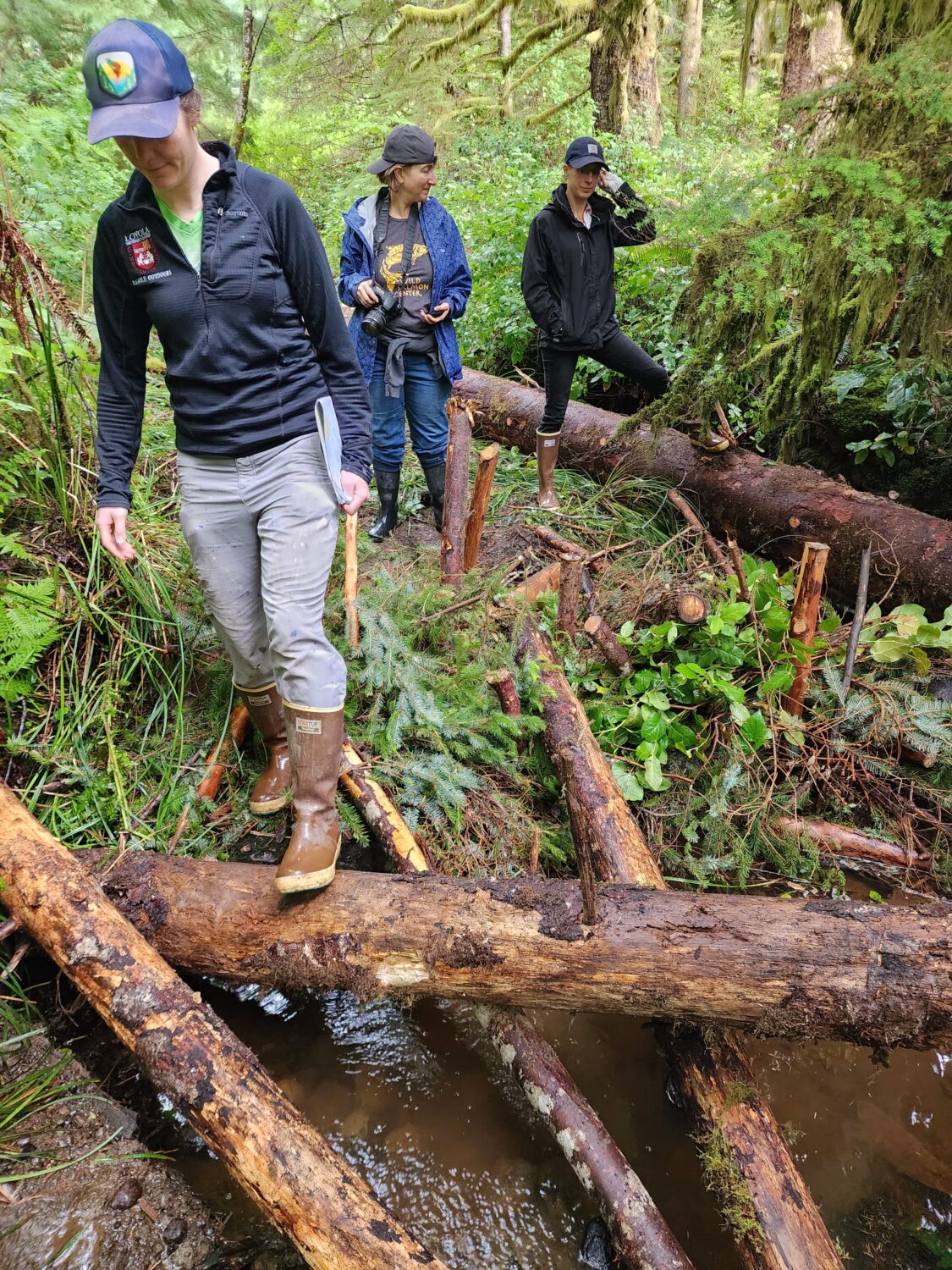
Krier came prepared. The team had permission from Rayonier—a private forestry company and the area’s major landowner—and permits from the Washington Department of Fish and Wildlife, along with schematics for removing or softening the creek’s five burly plank weirs, and for placing each strategically messy structure.
There’s urgency in this work. The plank weirs aren’t the only human hardscaping that’s actively disrupting these creeks. There’s also a warren of old and abandoned logging roads that run through this country, including one that cuts right up to the highest plank weir on one creek. Even now, with the water low, a sizable trickle flows over the rush- and sedge-covered roadbed, incising new, fish-pinching channels.
“Our plan was to use the West Fork Dickey River as a test case for our larger vision,” Krier says. “We’re aiming to show that these kinds of low-tech restoration solutions can help fish at dozens of other sites, with not much more than a little human muscle.”
And at least one ‘Arnold’—the nickname given to the largest and heaviest of the crew’s hand-held post drivers. With Arnold, Krier’s crew pounded large poles into the stream bank, then wove them with brush (or “slash,” in logging lingo). Some of these structures crossed the creek entirely; these are beaver dam analogs—a nod to what the plank weirs aimed to replace, just full of the necessary nooks and crannies for fish. Other structures, the PALS, stopped midstream, instead working to complicate, cool, and slow the creek, much as random accumulations of wood and debris would in undisturbed conditions.
With partners including PCSC, the Quileute Tribe, and willing landowners, Krier and Rasmussen next hope to roll out similar work at up to 40 other sites, drawn from an assessment of some 50 off-channel habitat sites developed in the 1990s by the WDFW’s Salmonid Screening, Habitat Enhancement, and Restoration Division, that today have deteriorated and become problematic, like the plank weirs, for overwintering coho.
It’s work that should keep Krier’s crews busy for a few years. With work on the West Fork Dickey tributaries now complete, her crews are now driving posts with Arnold on the East Fork Dickey, with projects scoped and ready at additional sites throughout the Olympic Peninsula. Meanwhile, Krier and Rasmussen will be keeping a close eye on their pilot PALS and BDAs on the West Fork Dickey.
“We’ll know that these structures are doing their job if, come winter, the creek starts to favor its natural channel over the roadbed,” Krier says. “Restoring natural hydrology here could open up all sorts of great habitat for coho. And maybe, one day, we’ll even see some beavers here, getting back to work.”
“Restoring natural hydrology could open up all sorts of great habitat for coho. And maybe, one day, we’ll even see some beavers here, getting back to work.”
WSC Fish Habitat Specialist Betsy Krier
